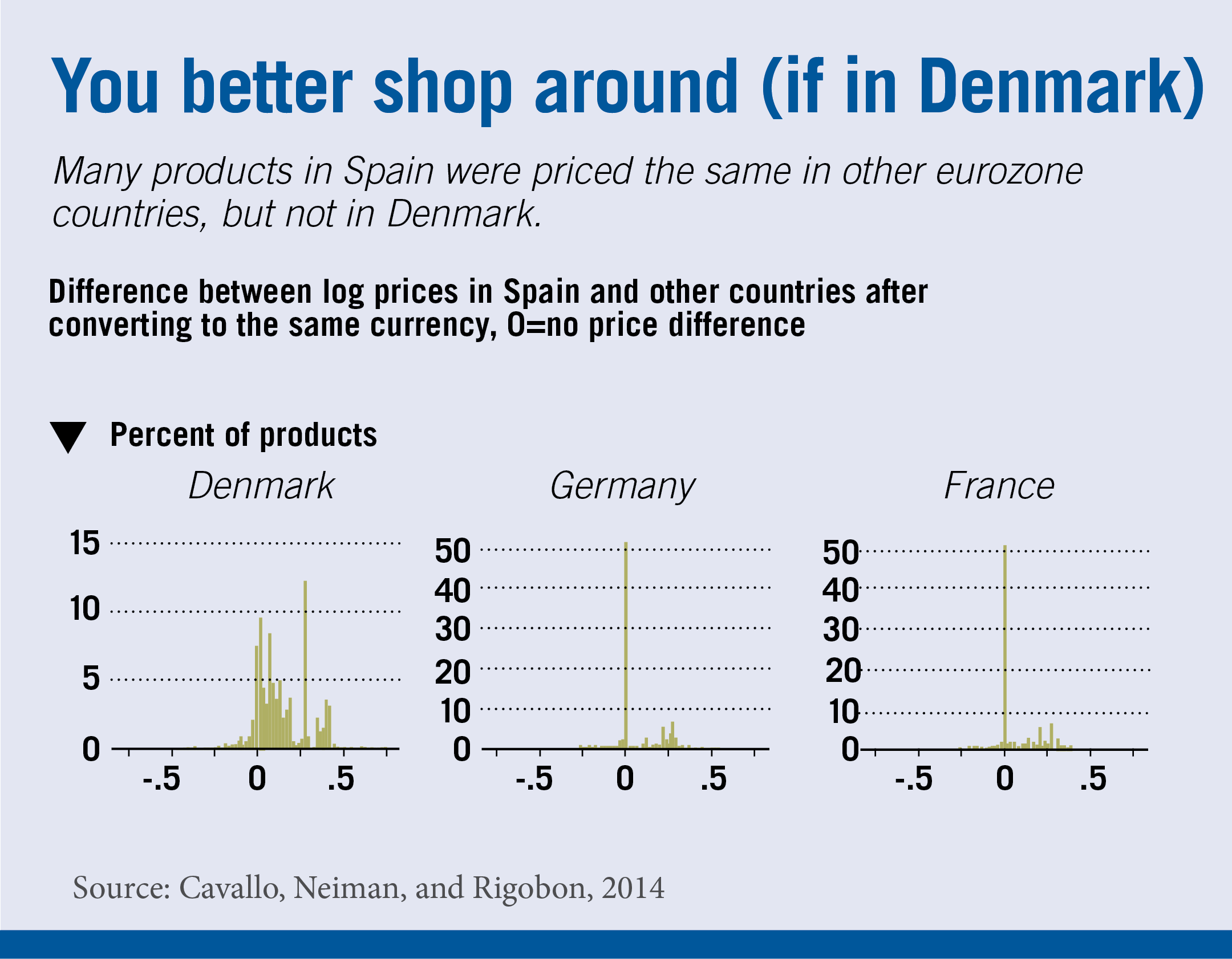
The eurozone has met at least one of its goals: creating a unified market with matching prices for specific goods.
- By
- February 04, 2015
- CBR - Economics

The eurozone has met at least one of its goals: creating a unified market with matching prices for specific goods.
The Economist’s Big Mac Index shows that the price of the sandwich, when translated into US dollars, varies from $1.54 in India to $7.80 in Norway. What interests economists is, why? Some have attributed diverging prices for the same goods in different countries to transportation costs, tariffs, and variations in language, culture, and income. Research, however, reveals that for a large set of goods, the most important factor is whether countries use different currencies.
And while the euro has come under fire in recent years for inhibiting eurozone members’ corrective measures following the financial crisis, the research illustrates that the currency union has met at least one of its goals: creating a unified market with matching prices for specific goods.
Associate Professor Brent Neiman, with Alberto Cavallo and Roberto Rigobon of the MIT Sloan School of Management, compares the online prices for nearly 120,000 products by Apple, IKEA, H&M, and Zara, sold in 85 countries between October 2008 and May 2013. The data come from MIT’s Billion Prices Project, which scrapes price information from the internet. That allows the researchers, for the first time, to compare prices in many countries for the exact same good on the exact same day.

The researchers generally find large price differences between countries that use different currencies. Prices in Japan, for example, are about 20% higher, on average, than those in the United States for the same products. Even in cases where averages prices are similar, roughly half the goods are much cheaper in one country and the other half are much more expensive—the United Kingdom and the US, for example, exhibit this pattern.
The key insight from the data comes from analyzing price differences between countries using the euro. When prices for electronics, furniture, and clothing in Spain are compared to prices for the same products in other eurozone countries, the histogram of price differences forms a sharp peak at zero, indicating prices across those countries are virtually the same.
“One of the initial arguments in favor of a common-currency area [in Europe] was that a single market with single prices would be created, and this is the first evidence I’m aware of showing that, to a large extent, at least for these types of products, it has in fact been successful,” Neiman says.
Interestingly, pegging one currency to another creates less pressure for prices to converge than if both countries use the same currency. The Danish krone is pegged to the euro, but prices for Danish products show significant variation from those in the eurozone. In fact, Denmark’s pricing histogram resembles the histograms for Norway and Sweden, which have independent currencies that are not linked to the euro. Similarly, prices in Ecuador and El Salvador, which use the US dollar, are closer to those in the US than prices from economies that merely peg their own currency’s value to the dollar, like Hong Kong or Jordan. “There does seem to be a meaningful difference between simply pegging to a [currency] and actually using it,” Neiman says.
The results could help economists better understand how multinational companies determine their pricing strategies. “The patterns we document point to the importance of customer psychology, firm organizational structure, and the internet for price setting behavior, elements which do not yet feature prominently in most standard macroeconomic models,” the researchers write.
The findings also are potentially significant for countries considering a change in their currency regime. Latvia, for example, joined the eurozone on January 1, and in a follow-up paper, the researchers show that prices for Zara clothes in Latvia have quickly converged with prices in the rest of the euro area.
For all the euro’s travails, it seems that it has reduced the influence of international borders on prices.

Chicago Booth’s Raghuram G. Rajan describes the task ahead for the US Federal Reserve.
Why a Soft Landing Is So Hard
Political philosopher Patrick Deneen discusses how to reorient the economic system for the common good.
Capitalisn’t: A Conservative Critique of Capitalism
Experts in finance and economics consider the costs and benefits of the US’s contentious cap on borrowing.
Does the Debt Ceiling Do More Harm than Good?Your Privacy
We want to demonstrate our commitment to your privacy. Please review Chicago Booth's privacy notice, which provides information explaining how and why we collect particular information when you visit our website.